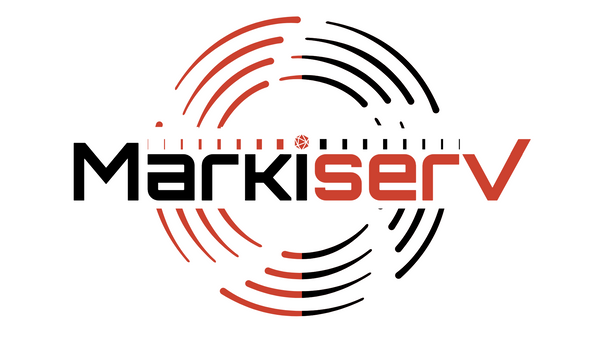
Markiserv in the News: How to Handle Difficult Clients
Share
Markiserv's president Ryan Anderson was recently featured in this article on Gigs Magazine discussing one of the largest difficulties in the graphic design business: dealing with difficult clients.
This article goes in depth and offers helpful real hands on tips from industry experts.
Ryan's feature is below.
Anticipate Feedback and Maintain Professional Barriers
With graphic design, as it comes with the territory, there are often many difficulties encountered with client work. Most of the time, clients have fantastic intentions, are very open-minded, and eager to cooperate. However, even with such clients, when it comes to the review stage, graphic designers must be prepared for a lot of back-and-forth. This is something that always happens and relates to the fact that when it comes to creative work, everyone always has something to say or feedback to provide. This is normal and acceptable.
My advice to any designer is to ensure they are aware, as they are designing anything, that they will receive feedback, changes, or critiques. The more you train your mind to anticipate these things, the easier it will be for you as a designer to deal with them. Considering that many designers are more emotionally sensitive, it is important to emotionally acknowledge that the feedback is not about you or your work; it is about the project and its objectives.
When it comes to clients who are outwardly difficult to deal with, rude, or demanding, it is important to set up a professional barrier. It took years of experience for me to understand this, as simple as it sounds. However, placing a project manager, intermediary, or similar barrier between the actual designer and the client is a great way to achieve this. Project managers are great at taking in a ton of noise and filtering it down to the designer, who can then pick up the filtered pieces and really let the creative juices flow.
Here is our take:
The Reality of Working with Challenging Clients
No matter how talented or experienced a graphic designer may be, one thing is almost inevitable: at some point, you’ll encounter a difficult client. Whether it’s the indecisive client who constantly changes direction, the one with unrealistic expectations, or the micromanager who wants to control every pixel, these challenges can be frustrating—but they don't have to derail your workflow or morale.
In the creative industry, client relationships are just as important as the work itself. A strong project can turn sour quickly if communication breaks down or expectations aren't aligned. However, with the right strategies in place, graphic designers can turn challenging interactions into opportunities for growth and better client management.
In this guide, we’ll explore common types of difficult clients, why these challenges happen, and most importantly, how to navigate them with grace, professionalism, and boundaries that protect your creativity and peace of mind.
Understand the Source of the Conflict
The first step in dealing with a difficult client is to understand the root of the problem. Is the client unclear about their goals? Are they unsure of how the design process works? Are they stressed by deadlines or internal pressure?
Sometimes clients behave unpredictably not because they’re intentionally difficult, but because they’re under pressure, have limited design knowledge, or are unsure how to communicate their ideas. Practicing empathy and active listening can help you diffuse tension and open up more productive conversations.
- Tip: Ask questions like:
- “Can you help me understand what’s most important to you about this design?”
- “What’s driving this change in direction?”
Set Clear Expectations from the Start
Many issues with clients stem from a lack of clear expectations. To avoid misunderstandings, it’s essential to define everything upfront in your contract or proposal:
- Scope of work
- Number of revisions
- Timeline and milestones
- Deliverables
- Payment terms
- Communication methods
When clients understand what’s included and what isn’t, they’re less likely to make unreasonable requests.
Tip: Use tools like a creative brief, project timeline, and revision tracker to keep everyone aligned.
Practice Proactive Communication
Good communication is key to any successful client relationship. With difficult clients, it's even more important to over-communicate rather than under-communicate.
Keep them updated with project status reports, send regular emails, and confirm verbal agreements in writing. When they feel included, they’re more likely to trust the process—and you.
Tip: Reiterate changes or requests in follow-up emails:
“Just to confirm, we’re moving forward with Option B for the homepage banner and holding off on the alternate color palette for now.”
Create a Structured Revision Process
Clients often don’t realize how much work goes into each change. Without a clear revision process, you risk being stuck in an endless loop of tweaks.
Set a fixed number of revisions in your contract and charge additional fees for extra rounds. Present revisions with rationale to show your decisions are rooted in strategy, not just aesthetic.
Tip: Use collaborative tools like Figma, Adobe XD, or InVision for visual feedback so revisions are streamlined and easy to manage.
Maintain Professional Boundaries
It’s important to be responsive, but you also need to protect your time, energy, and mental well-being. Difficult clients may try to contact you outside of agreed hours, make urgent demands, or ask for free extras.
Be polite but firm. Remind them of agreed-upon boundaries:
“I’m happy to address this first thing Monday morning. My working hours are Monday through Friday, 9 to 5.”
Tip: Set expectations for communication response times in your onboarding documents (e.g., “Emails are answered within 24 hours on business days”).
Know When to Walk Away
Sometimes, despite your best efforts, the relationship simply isn't working. If a client is consistently disrespectful, refuses to pay, or crosses professional boundaries, it may be time to end the relationship.
It’s okay to fire a client—with professionalism. Provide written notice, outline what’s been delivered, and offer a polite explanation.
Tip: Say something like:
“I believe our working styles aren’t aligning, and I want to ensure you get the results you’re looking for. I’ll deliver all remaining assets by Friday and can refer you to another designer if needed.”
Learn and Improve from Every Experience
Each difficult client offers an opportunity to refine your processes, communication, and contracts. After the project ends, ask yourself:
- What red flags did I miss during onboarding?
- How can I clarify my process better next time?
- What can I add to my contract to protect myself?
Over time, you’ll develop a toolkit that helps you filter ideal clients, spot potential challenges early, and manage expectations more effectively.
Conclusion: Turn Challenges into Growth Opportunities
Difficult clients are part of the design business—but they don’t have to be a source of stress or burnout. With strong processes, proactive communication, and well-defined boundaries, you can navigate even the toughest situations with confidence.
Remember, your job is not just to create great design—it’s to guide clients through a creative process they may not fully understand. By staying calm, professional, and solutions-oriented, you’ll not only protect your creative energy but also build stronger relationships and a better reputation.
And who knows? That tough client today might become your most loyal advocate tomorrow.
